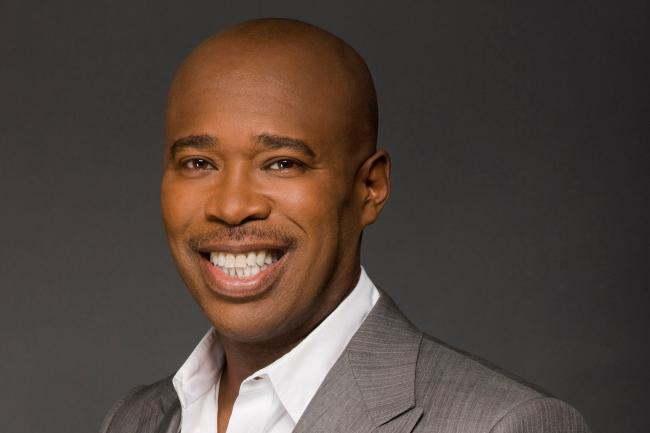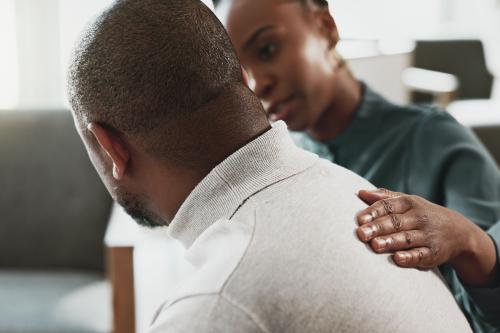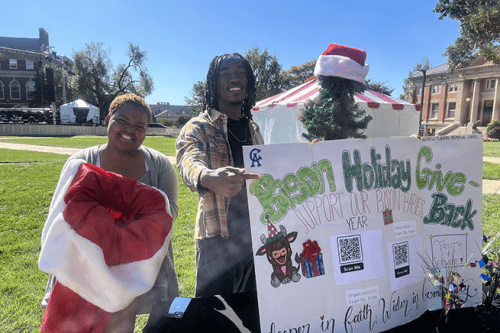For the first time in its eight-year history, the Cricket Celebration Bowl will present the diversity of excellence housed at Howard University.
With their 14-7 victory over Morgan State on November 18, Howard University’s football program clinched consecutive Mid-Eastern Athletic Conference (MEAC) regular season titles and its first postseason appearance since 1996. The Cricket Celebration Bowl, an annual matchup between the champions of the MEAC and the Southwestern Athletic Conference (SWAC), will this year feature Howard and SWAC winner Florida A&M University (FAMU). The 2023 Cricket Celebration Bowl is scheduled for noon on Saturday, December 16, at Atlanta’s Mercedes-Benz Stadium and will be nationally televised on ABC.
But for both Howard and FAMU, this means much more than your typical football game – it represents an invaluable opportunity to showcase the continued importance of historically Black colleges and universities (HBCUs), and for the entire country to see. We spoke with Howard’s athletic director Kery Davis ahead of this historic moment for the University and discussed the impact of the Cricket Celebration Bowl on Howard and HBCUs nationwide, HBCUs providing a unique experience for their student-athletes, the recent resurgence of Howard’s athletics across-the-board, and much more.
This interview has been edited for length and clarity.
How do you believe the Cricket Celebration Bowl featuring Howard University and Florida A&M University contributes to the representation of HBCUs in mainstream sports, and why is this representation important?
KD: You know, I’ve said many times that the Celebration Bowl is a three-hour commercial on ABC. That’s something you couldn’t buy. We have an opportunity to not only tell the stories of HBCUs, but also tell the story of Howard.
You know, we take for granted that a national audience knows the history of Howard and what it has meant culturally and socially and politically to this country. But many people don’t. You’d be surprised, when the basketball team for example qualified for the NCAA tournament last year and we went to Des Moines, Iowa, it was shocking the amount of people in that audience who had no idea where Howard was or who had graduated from Howard. They were asking questions, you know, “Why is Kamala Harris at the game?” They didn’t realize the impact – wait a minute, the second-most powerful person on the planet is a graduate of this institution! You’ve had Supreme Court justices who have graduated from this institution. So, it’s an opportunity to make a national audience aware of the excellence of Howard University and the excellence of HBCUs in general.
How do events like the Cricket Celebration Bowl provide a platform to showcase and celebrate Black excellence – not only in athletics but also in academics and leadership? How can this exposure positively impact underrepresented minorities?
KD: One of the other things that exposure like this does is it allows young people who are not aware of the excellence of institutions like Howard and FAMU to become more familiar with them. We look at this type of exposure – whether it’s the Celebration Bowl, whether it’s appearing in the NCAA tournament – as opportunities to recruit, if you will, other young African Americans to apply and want to be a part of this institution.
Athletics can’t take credit for it, but we do believe that we’re a part of the recent renaissance that I believe Howard has had in terms of admissions, in terms of the number of people applying to the University. When you see us on the national stage, it’s an opportunity for young people to learn about the institution, and eventually and potentially want to be a part of it. Learning that’s the school that Kamala Harris went to, or Anthony Anderson, or Taraji P. Henson, or Dean [Phylicia] Rashad, or Debbie Allen, or Toni Morrison. And they’re in Washington, DC, which is a great city? And they’re one of the top academic institutions in the country, producing more Black doctors and Black lawyers than any other institution? Yeah, I can see myself going there and being a part of that. And we’re hoping that we’re part of that overall story of Howard that people will be attracted to.
One of the great things I love about Howard is every student here – student, student-athlete – is a rockstar. And they come to an environment where they’re nurtured as rockstars.”
HBCUs are known for fostering a uniquely supportive environment for student-athletes. How do you think the athlete experience at Howard and other HBCUs differs from predominantly white institutions (PWIs), and what role does this experience play in the personal and professional development of the student-athletes?
KD: That is a great question. My personal undergraduate experience was not at an HBCU, and everything about it tried to tell me tried to tell me that I didn’t belong. There was, “Oh, you’re just here because you’re a basketball player,” or, “You’re from the Bronx so you’re part of their affirmative action plan; otherwise you wouldn’t be here.” And it was a struggle for me to try to prove to people that I belonged. I used to go around wearing my SAT scores on my head. [laughs] Not literally, but in particular to try to show that I belong here. It made me defensive, and it made me believe that I was less than. You have to overcome it.
But one of the great things I love about Howard is every student here – student, student-athlete – is a rockstar. And they come to an environment where they’re nurtured as rockstars. That’s the great thing about Howard. When you ask our athletes why did they choose Howard over the other opportunities they have, they often will say it was the family atmosphere, it was the nurturing atmosphere, it was the understanding and belief that I was going to be supported and developed to maximum capacity.
And I say this to our student-athletes: enjoy this experience, because this is the greatest collection of Black excellence that you may ever be around. The person in your dorm next door to you DJing at the local nightclub can be the next big music producer, or the person who is next door to you involved in student government could be the next Kamala Harris, or the person who’s reading poetry down at Busboys & Poets can be the next Ta-Nehisi Coates or Toni Morrison. That’s who you’re going to school with. That’s what we want to make sure that we’re nurturing and developing.
I’ll say one other thing. Our athletic program, we have students who excellence is just a part of what they do. The point guard on our basketball team is also a first-year law student. One of the throwers on our track team is a first-year medical student. There are not that many institutions in the country who have those type of students excelling at the level our students are, both on the court and off the court, and we’re very proud of that.
The Cricket Celebration Bowl has the potential to inspire underrepresented minorities to pursue higher education and athletic excellence. How can this event serve as a catalyst for motivating young individuals to overcome barriers and strive for success in various fields?
KD: Having a national audience, no one understands that you can go to an HBCU and see the same level of exposure, playing in an NFL stadium. We’re hopeful that on the telecast they highlight the academic excellence of the school, the social significance of the school, the cultural impact that the University has had. I want students from every underrepresented part of our diaspora to want to be a part of this experience, whether it’s at Howard or FAMU or North Carolina A&T – knowing that they can achieve a level of excellence at these institutions and also be around people who look like them and support, nurture, and develop them.





